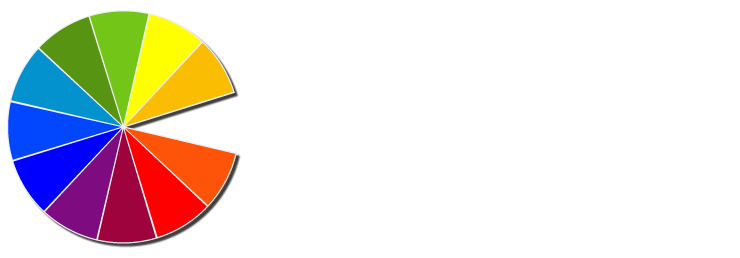If you’re looking for a skin treatment that goes beyond hydration and plumping, you’ve probably heard about Rejuran. This skin-healing injectable is becoming increasingly popular for anti-aging, scar repair, and overall skin rejuvenation. But what exactly is Rejuran, and how does it work?
In this guide, we’ll break down everything you need to know—from its benefits and procedure to how it compares with other popular skin treatments. Whether you’re considering Rejuran or just curious about this buzz-worthy therapy, let’s dive in!
What Is Rejuran?
Rejuran is a skin-rejuvenating injectable that uses polynucleotides (PN)—a fancy term for DNA fragments derived from salmon. Sounds a bit unusual, right? But here’s the cool part: these polynucleotides help repair damaged skin, boost collagen production, and improve elasticity.
Unlike dermal fillers, which mainly add volume, Rejuran works at a cellular level to heal and strengthen your skin. That’s why it’s often called the “Skin Healer” injection.
Types of Rejuran Treatments
There are different types of Rejuran designed to target specific concerns:
- Healer – General skin rejuvenation, anti-aging, and hydration boost.
- S – Specifically formulated for acne scars and deep skin damage.
- I – Designed for the delicate under-eye area, reducing fine lines and dark circles.
- HB – A combination of polynucleotides and hyaluronic acid for added hydration.
No matter your skin concern, there’s likely a Rejuran treatment suited for you!
How Rejuran Works: The Science Behind Polynucleotide Therapy
Now, let’s get a bit science-y (but not too much).
What Are Polynucleotides?
Polynucleotides (PN) are naturally occurring DNA fragments that help repair damaged cells and stimulate collagen production. Rejuran uses PN from salmon DNA, which is highly compatible with human skin.
How Does It Work?
When injected into the skin, Rejuran:
- Stimulates collagen production, improving skin firmness.
- Repairs damaged skin cells, reducing fine lines and scars.
- Boosts hydration and elasticity, giving your skin a youthful glow.
- Reduces inflammation, helping with redness and sensitivity.
The result? Healthier, firmer, and more radiant skin—from the inside out!
Benefits of Rejuran Treatment
So, why are people raving about Rejuran? Here’s what makes it special:
- Boosts collagen naturally – Unlike fillers, which add volume, Rejuran stimulates your own collagen for long-term benefits.
- Repairs damaged skin – Perfect for acne scars, sun damage, and post-inflammatory hyperpigmentation.
- Reduces fine lines and wrinkles – Smooths out early signs of aging.
- Strengthens the skin barrier – Great for those with sensitive or thin skin.
- Improves hydration and elasticity – Gives you that “glass skin” glow.
If you want a skin refresh without altering your facial structure, Rejuran is a great choice!
Who Is Rejuran Best For?
Rejuran is ideal for:
- Anyone looking to improve skin texture and elasticity.
- People with acne scars or uneven skin tone.
- Those experiencing fine lines, wrinkles, and sagging skin.
- Anyone with sensitive or dry skin who needs barrier repair.
However, pregnant women, individuals with severe allergies, or those prone to keloid scars should consult a doctor before considering Rejuran.
The Rejuran Procedure: What to Expect
Wondering what a Rejuran session is like? Here’s a step-by-step breakdown:
Step 1: Pre-Treatment Preparation
- A numbing cream is applied to minimize discomfort.
- Your skin is cleansed thoroughly.
Step 2: The Injection Process
- Rejuran is injected using micro-needles across the treatment area.
- The entire process takes 30-45 minutes.
Step 3: Post-Treatment Care
- Mild swelling and redness may occur but usually subside within 1-2 days.
- No heavy makeup or intense workouts for at least 24 hours.
- Sunscreen is a must to protect the skin while it heals.
Most people need 3-4 sessions spaced 3-4 weeks apart for optimal results.
Comparing Rejuran to Other Skin Treatments: Which One Is Right for You?
With so many skin-rejuvenating treatments available, choosing the right one can feel overwhelming. While Rejuran is known for its healing and collagen-boosting properties, there are other treatments that offer similar or complementary benefits. Let’s take a closer look at how Rejuran compares to other popular aesthetic treatments, so you can decide which option best suits your skin concerns.
1. Rejuran vs. Profhilo: Hydration vs. Skin Repair
How They Work:
- Rejuran contains polynucleotides (PNs) derived from salmon DNA, which repair damaged skin and stimulate collagen production for firmer, healthier skin.
- Profhilo is an injectable skin booster made of hyaluronic acid (HA), designed to deeply hydrate and improve skin elasticity.
Key Differences:
| Feature | Rejuran | Profhilo |
|---|---|---|
| Main Ingredient | Polynucleotides (PN) | Hyaluronic Acid (HA) |
| Primary Benefit | Skin healing & collagen repair | Intense hydration & skin plumping |
| Best For | Acne scars, skin damage, fine lines | Dry, sagging skin, loss of elasticity |
| Treatment Frequency | 3-4 sessions every 3-4 weeks | 2 sessions, 1 month apart |
Which One Should You Choose?
- If your main concern is skin healing, repairing damage, or reducing acne scars, Rejuran is the better choice.
- If your focus is deep hydration and achieving dewy, plump skin, go for Profhilo.
- Combination Treatment: Some clinics recommend combining both for ultimate hydration and skin regeneration.
2. Rejuran vs. PRP (Platelet-Rich Plasma Therapy): Natural Skin Regeneration
How They Work:
- Rejuran relies on salmon DNA-based polynucleotides to boost skin repair.
- PRP (Platelet-Rich Plasma) uses your own blood plasma to stimulate cell regeneration and collagen production.
Key Differences:
| Feature | Rejuran | PRP |
|---|---|---|
| Main Ingredient | Polynucleotides from salmon DNA | Platelets from your own blood |
| Primary Benefit | Skin healing, anti-aging | Skin renewal, natural rejuvenation |
| Best For | Wrinkles, acne scars, skin texture | Hair growth, skin renewal, post-laser healing |
| Treatment Frequency | 3-4 sessions every 3-4 weeks | 3-5 sessions every 4 weeks |
Which One Should You Choose?
- PRP is great for overall skin rejuvenation and is commonly used for hair regrowth, while Rejuran is better for targeted skin repair and deep healing.
- If you prefer an autologous treatment (using your own body’s natural components), PRP may be more appealing.
- Combination Treatment: Many doctors use PRP and Rejuran together to supercharge skin renewal.
3. Rejuran vs. Dermal Fillers: Repair vs. Volume
How They Work:
- Rejuran enhances skin quality and texture without adding volume.
- Dermal fillers, like Juvederm or Restylane, add plumpness to areas like cheeks, lips, and under-eyes.
Key Differences:
| Feature | Rejuran | Dermal Fillers |
|---|---|---|
| Main Ingredient | Polynucleotides | Hyaluronic Acid (HA) |
| Primary Benefit | Skin healing & texture improvement | Volume restoration & wrinkle filling |
| Best For | Fine lines, acne scars, aging skin | Loss of volume, deep wrinkles, facial contouring |
| Treatment Frequency | 3-4 sessions every 3-4 weeks | 1 session every 6-12 months |
Which One Should You Choose?
- If you want plumper cheeks or fuller lips, go for fillers.
- If you want smoother, firmer skin with better elasticity, Rejuran is the way to go.
- Combination Treatment: Many patients combine Rejuran with fillers to restore volume while also improving skin texture.
4. Rejuran vs. Botox: Skin Repair vs. Wrinkle Relaxation
How They Work:
- Rejuran stimulates collagen production and skin healing.
- Botox temporarily relaxes facial muscles to reduce expression lines.
Key Differences:
| Feature | Rejuran | Botox |
|---|---|---|
| Main Function | Repairs skin & increases collagen | Reduces wrinkles by relaxing muscles |
| Best For | Improving skin texture & elasticity | Smoothing dynamic wrinkles (forehead, crow’s feet) |
| Results Duration | 6-12 months | 3-6 months |
Which One Should You Choose?
- If your concern is deep wrinkles caused by muscle movement (like frown lines or crow’s feet), Botox works best.
- If you want long-term skin improvement, elasticity, and collagen regeneration, Rejuran is better.
- Combination Treatment: Many people use Botox for wrinkle prevention and Rejuran for skin quality improvement.
5. Rejuran vs. Microneedling: Collagen Stimulation Methods
How They Work:
- Rejuran delivers polynucleotides via microinjections for deep skin healing.
- Microneedling creates tiny wounds in the skin to stimulate collagen production.
Key Differences:
| Feature | Rejuran | Microneedling |
|---|---|---|
| Mechanism | Injected into the skin | Tiny needles create controlled micro-injuries |
| Best For | Deep skin healing, fine lines | General skin texture, mild acne scars |
| Downtime | 1-2 days | 3-5 days |
Which One Should You Choose?
- Microneedling is more affordable and great for mild concerns, while Rejuran works better for deeper skin damage.
- Combination Treatment: Microneedling can be combined with Rejuran for better product absorption.
6. Rejuran vs. Laser Treatments: Regeneration vs. Resurfacing
How They Work:
- Rejuran repairs skin from within, focusing on healing and collagen production.
- Lasers (like Fraxel, CO2, or Pico lasers) remove damaged skin layers to improve texture and pigmentation.
Key Differences:
| Feature | Rejuran | Laser Treatments |
|---|---|---|
| Method | Injectable skin rejuvenation | Energy-based resurfacing |
| Best For | Fine lines, sensitive skin, healing | Pigmentation, deep wrinkles, acne scars |
| Downtime | 1-2 days | 5-7 days |
Which One Should You Choose?
- Lasers work well for pigmentation and deeper wrinkles, but they can cause irritation for sensitive skin types.
- Rejuran is gentler and better suited for people looking for gradual, natural skin improvement.
- Combination Treatment: Many dermatologists combine Rejuran with laser treatments for comprehensive skin renewal.
How Long Does It Take to See Results?
- Immediate hydration boost within a few days.
- Collagen production starts in 2-4 weeks.
- Full results after 3-4 sessions.
Results last 6-12 months, with maintenance sessions recommended every 6 months.
Side Effects & Risks of Rejuran
Rejuran is safe with minimal side effects, but you may experience:
- Mild redness, swelling, or bruising.
- Tiny injection bumps that disappear within 24-48 hours.
- Temporary tightness or sensitivity.
Aftercare: How to Maintain Your Results
- Hydrate your skin with a gentle moisturizer.
- Avoid excessive sun exposure and always use sunscreen.
- Skip harsh skincare (like retinol or acids) for a few days.
- Maintain results with touch-up sessions every 6-12 months.
Final Thoughts: Is Rejuran Worth It?
If you’re looking for a natural way to heal and strengthen your skin, Rejuran is a fantastic option. Unlike fillers or Botox, it works from within to improve skin quality, elasticity, and hydration.
- Pros: Natural collagen boost, minimal downtime, long-term benefits.
- Cons: It requires multiple sessions, and there is minor swelling post-treatment.
Would you try Rejuran? Let us know in the comments!
Reference Links:
-
Rejuran Official Website (if available for more info on treatments) – www.rejuran.com
-
Aesthetic Dermatology Articles on Rejuran – Rejuran Skin Healing Benefits – American Academy of Dermatology
-
Comparing Injectable Skin Treatments – Profhilo: The Injectable Skin Booster
- Botox vs. Rejuran – Injectables: Are Fillers and Neuromodulators Right for You?
- Microneedling and Rejuran Comparison – Microneedling for Skin Rejuvenation – National Library of Medicine



